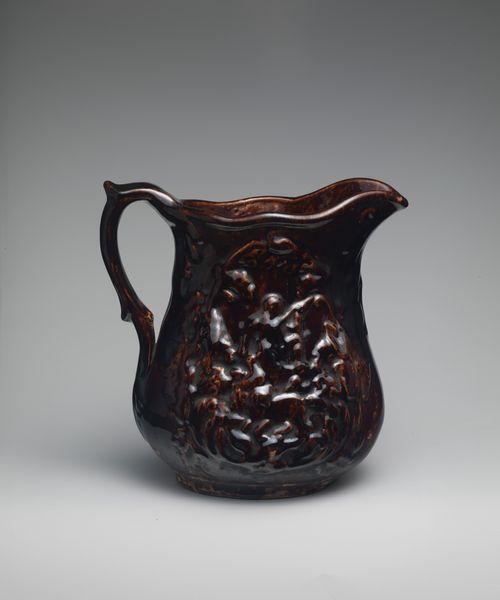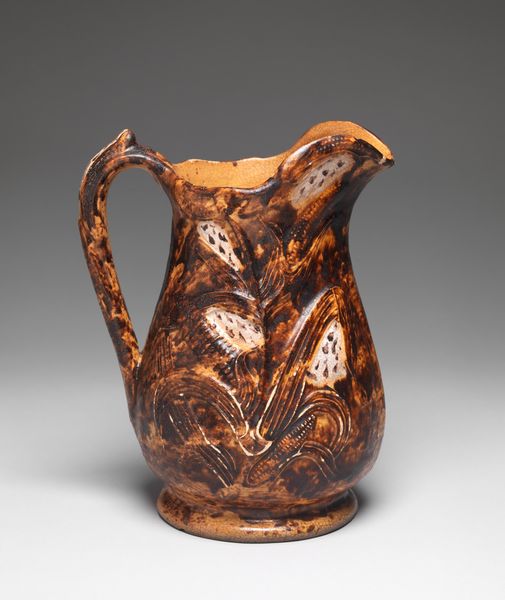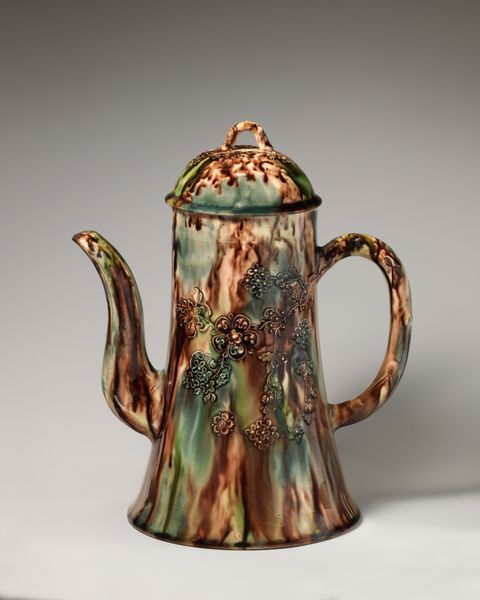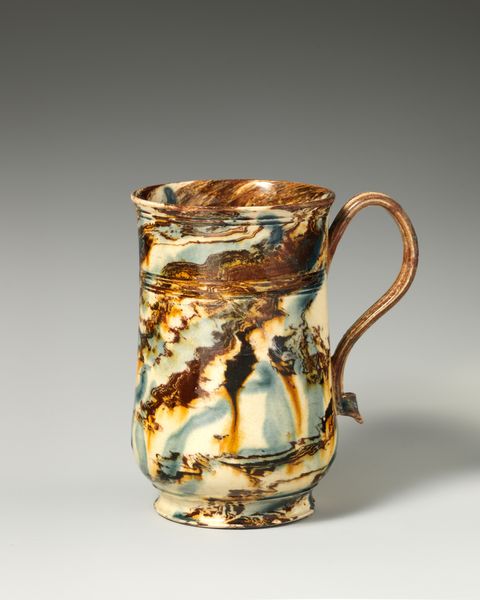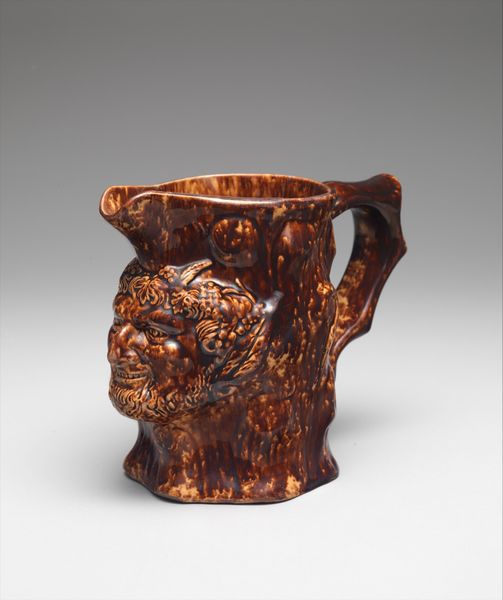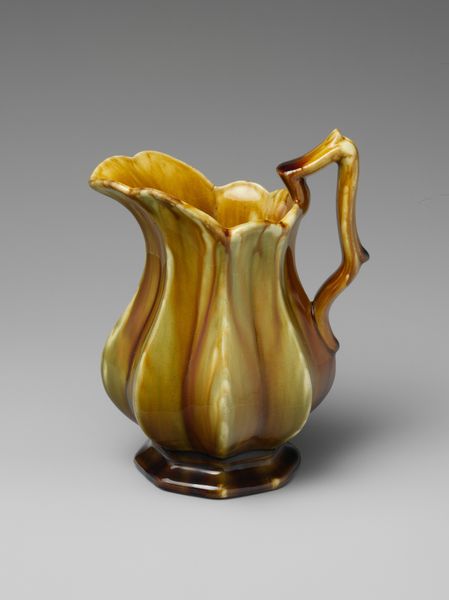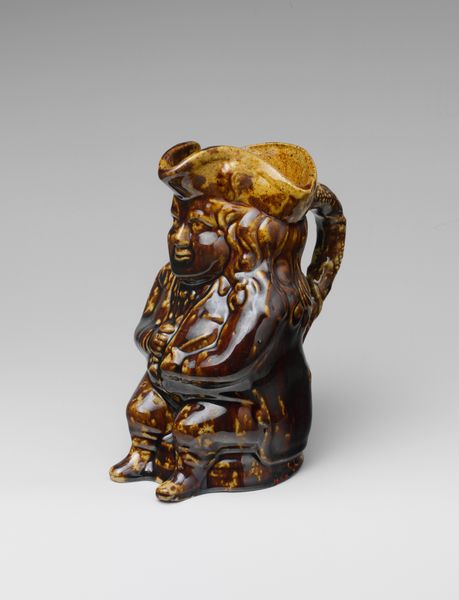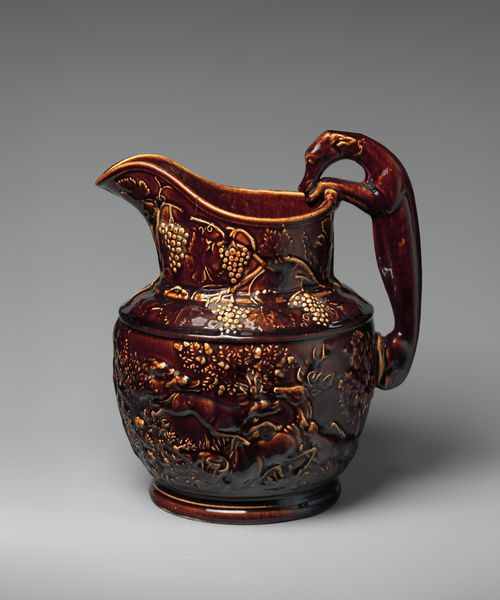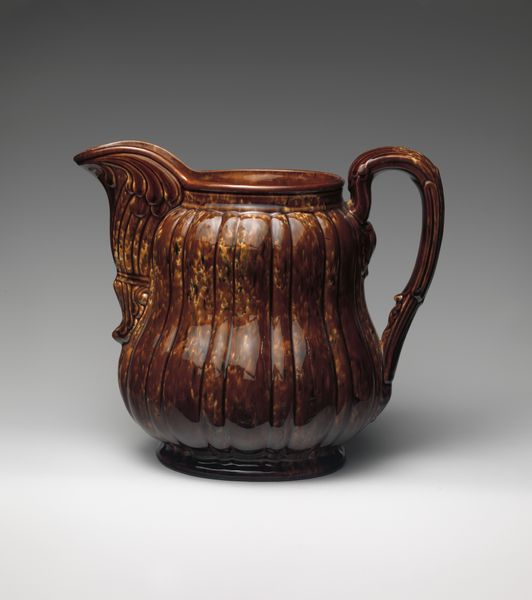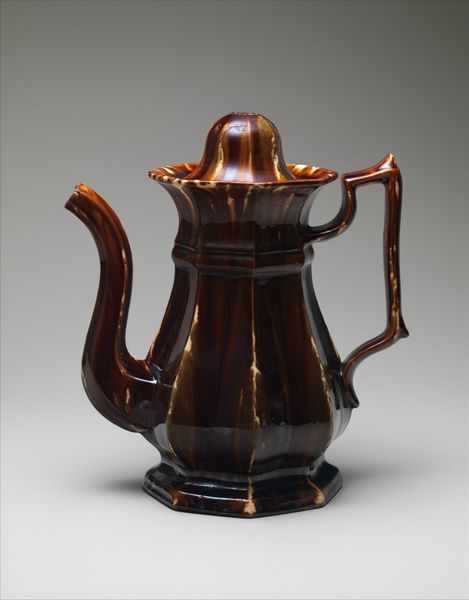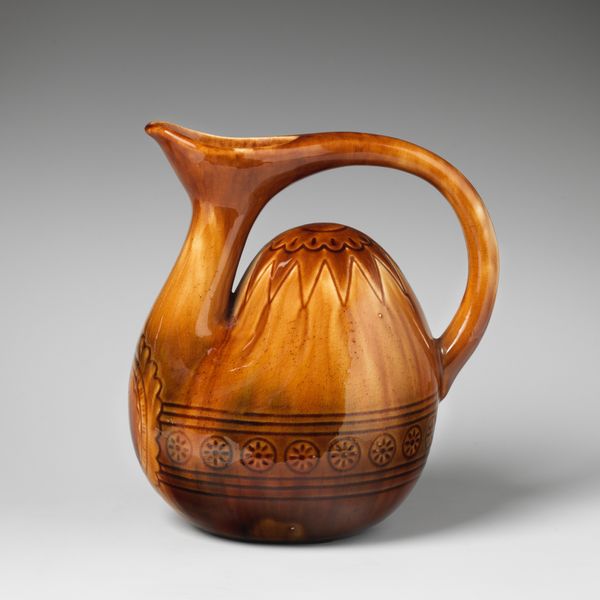
ceramic, earthenware, sculpture
#
portrait
#
ceramic
#
earthenware
#
stoneware
#
sculpture
#
genre-painting
Dimensions: H. 6 in. (15.2 cm)
Copyright: Public Domain
Curator: This is a "Toby Jug" crafted between 1849 and 1858 by Lyman, Fenton & Co. at the Metropolitan Museum of Art. It is a captivating earthenware sculpture with an intriguing brown glaze. Editor: Well, that glaze is giving me instant rustic tavern vibes – almost like a molasses coating. I'm already imagining the kilns firing this thing up. The utilitarian purpose contrasts intriguingly with its portrait-like quality. Curator: Precisely! The 'Toby Jug' isn't just any jug; it’s a figure, a kind of jovial everyman embodying a convivial spirit, drinking, smoking, and very deliberately performing merriment, repeated over time. We find these images echoing through the genre painting of its era. What is preserved in this seemingly simple object? Editor: It's an object embodying the labor and social life connected to its production and use. Think of the clay mined, formed, fired – the hands that shaped this and the beverages that filled it. The browns are a very particular choice as they denote both soil and what goes into that soil in terms of agricultural labour and capitalistic farming. Curator: An excellent observation. The earth tones lend it that humble, accessible feel and are crucial for our reception, calling to mind familiar scenes of gathering, toasting and partaking. But I would argue there's a potent psychology at play, an effort to monumentalize the everyman as someone to be respected and idealized—someone whose joy matters, to ensure the preservation of communal practices through iconography and symbol. Editor: Agreed, although the sheer repetition of these objects somewhat diminishes the 'monumentalizing' effect for me. I view these, and other ware, not as a single iconic figure frozen in time but a cultural phenomenon whose significance can only be derived by looking at the means and materials through which these figures emerge. They are what people could afford to consume through labour, nothing more. Curator: But don't you think there's a reason this specific form persisted? Its functionality married with its representational quality became deeply rooted. The 'Toby Jug' became a symbol, resonating beyond its simple function. Editor: Perhaps we're both seeing the same symbol refracted through our own biases! Curator: Yes. In a way, it mirrors the very nature of symbols: multifaceted, adaptable, enduring across the times, as is the means for manufacturing cultural symbols and their dissemination!
Comments
No comments
Be the first to comment and join the conversation on the ultimate creative platform.
